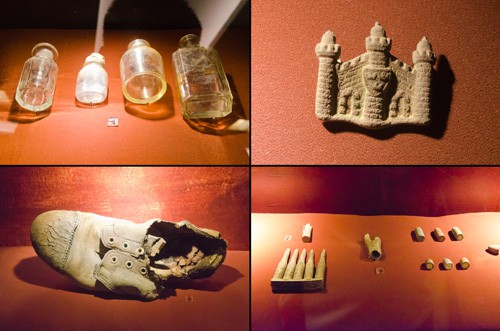We don’t often think of the recent past as a source of archaeological knowledge, but recent work in Singapore has focused on the historical past as much as the Temasek-period settlement. A new exhibition at the National Library of Singapore showcases one such work on the recent past – the excavation of Adam Park, the site of a World War II battle during the fall of Singapore in 1942.

World War II has a prominent place in Singapore’s history. Fortress Singapore was supposed to be the stronghold of British military power in Southeast Asia; defending forces in Singapore outnumbered the invading Japanese army by a factor of four to one – so it was a great psychological blow when the supposedly impregnable fortress fell in just seven days. Adam Park saw some of the fiercest fighting from 12-15 February of 1942, right up to the day the Japanese army claimed victory with the surrender of the British forces. At Adam Park, the 1,000-strong Cambridgeshire Regiment fought the Japanese forces for control of a water pumping station that supplied water to the urban settlement. The exhibition space literally takes one through the trenches as visitors learn the story of the crucial four days. Outside the ‘trenches’ is a topographic representation of the terrain.


Adam Park was excavated last year by battlefield archaeologist Jon Cooper and local archaeologist Lim Chen Sian, working with the Singapore Heritage Society and the National Heritage Board. Many of the finds are small, but telling:

The exhibition is accompanied by the drawings of William Haxworth, who was interned at the infamous WWII prison in Changi. During his incarceration, Haxworth produced hundreds of sketches of life within the walls. He later became the first traffic police superintendent of Singapore.


These two exhibitions form part of the 70th anniversary of the Fall of Singapore in World War II. They will be at the National Library of Singapore until June 24.














12-15 February 1940, 41 or 42? It may seem obvious to most but it’s good to state the year for all dates mentioned.
1942. Thanks – I’ve amended the post.